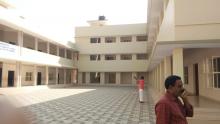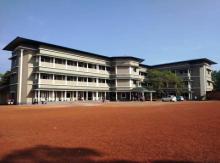- Brief Summary of the Scheme :
Rural Infrastructure Development Fund (RIDF) programme of Rural Development Department is being implemented from Tranche III with the assistance of NABARD. Till the year 2009-10, the department is co-ordinating the RIDF projects of blocks only. Since then Commissionerate of Rural Development is made the co-ordinating departments for the projects being implemented through District Panchayath, Block Panchayath and GramaPanchayath. From 2012-2013 onwards Commissioner for Rural Development is made controlling officer of the head of account sanctioning the re-imbursement of NABARD projects of 3 tier Panchayaths.
In the case of rural road projects sanctioned under RIDF 20% of the projects cost will have to be met by the Block Panchayat and the remaining 80% will be provided by the NABARD on reimbursement basis in accordance with the progress of expenditure incurred on the Project. For social sector project the sharing pattern is 85:15 and for agriculture and allied activities it is 95:5
Government of India / Reserve Bank of India created the Rural Infrastructure Development Fund (RIDF) in NABARD in 1995-96. The corpus of the fund is being extended on a year-to-year basis by GoI since then. The first tranche of RIDF (RIDF-I) was launched with an initial corpus of 2,000 crore which was met out of the deposits from commercial banks, including private and public sectors banks operating in India, to the extent of shortfall in their agricultural lending. Since 1996-97, the sources of deposits from commercial banks have been broad based by including shortfall in achievement of priority sector lending target and /or lending to agriculture and/or lending to weaker sections as on last reporting Friday of March every year.
- Whether the programme is continuing or new Scheme:
RIDF is a continuing scheme
- Justification for proposing the provision in the State Budget:
This amount is intended for meeting the expenditure towards the reimbursement claim.
- Objective
The objective this scheme is the development of rural infrastructure in the field of Agricultural and related sector, Social sector and also in rural connectivity through the funding support from RIDF of NABARD.
- Activities
45 projects are identified for availing financial assistance under NABARD assisted RIDF scheme. Permitted works includes works related to agriculture and irrigation, soil conservation, flood protection, social sector project and rural connectivity. Creation of new assets in the single priority under the scheme and renovation projects are not taken up for assistance.
- Component wise financial target:-
(a). Block Panchayat
- Rural Connectivity - Rs.1200.00 lakh
- Agriculture and related sectors - Rs. 300.00 lakh
- Social sector - Rs. 500.00 lakh
(b). GramaPanchayat
-
-
- Rural Connectivity - Rs.900.00 lakh
- Agriculture and related sectors - Rs. 225.00lakh
- Social sector - Rs. 375.00 lakh
-
( C) District Panchayat
- Rural Connectivity - Rs.1200.00 lakh
- Agriculture and related sectors - Rs. 300.00 lakh
- Social sector - Rs. 500.00 lakh
- Physical Target :
(a). Block Panchayat
- Rural Connectivity - 24
- Agriculture and related sectors - 14
c. Social sector - 16
Total - 54 (spill over-30, New-24)
GramaPanchayat
- Rural Connectivity - 20
- Agriculture and related sectors - 5
C. Social sector - 9
Total - 34(spill over-24 New-10)
District Panchayat
-
- Rural Connectivity - 19
b.Agriculture and related sectors - 5
C. Social sector - 7
Total - 31 (spill over-20,New-11)
- How the programme will be implemented:
NABARD-RIDF loan is provided tranche wise. The programme is implemented through Local Self Government Institutions. Works are arranged by tender and beneficiary Committees are not relied upon for execution.
- Time Line of the Programme :
Normally NABARD is fixing two year time line for the completion of the works in each tranche at the time of sanctioning the project itself. NABARD usually extend time line for completion of projects and submission of reimbursement claims.
- Outcome of the Programme:
Strengthening of rural infrastructure through creation of new assets
- 3003 views





